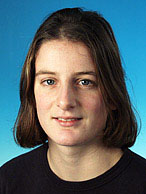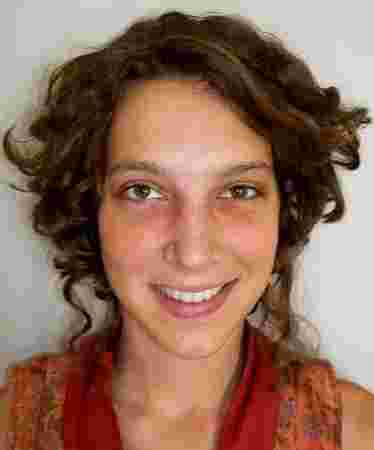Please check this site for possible changes in location or additional information.
Go to the elevators in the main building, select level 14. Walk in the direction of the A-wing.
The afternoon program is in the aula of the same building.
| 09:30 | coffee | |
|---|---|---|
| 09:50 | welcome by Bas Kooijman | |
| 10:00 | Ulf Dieckmann: Models of evolutionary dynamics; an integrative perspective | |
| 10:30 | Hans Metz: Towards a synthesis between Adaptive Dynamics and Evo-Devo | |
| 11:00 | coffee | |
| 11:15 | Jean-Christophe Poggiale: Spatial heterogeneity and biodegradation | |
| 11:45 | Jaap vd Meer: A comparison between the Metabolic Theory of Ecology and the Dynamic Energy Budget theory. | |
| 12:15 | lunch at VU restaurant (ground floor main building) | |
| 13:45 | Tineke Troost: Evolution of community metabolism | |
| 15:15 | reception by Tineke (adjacent to Aula) | |
| 15:45 | Caroline Tolla: Modelling of microbial population dynamics in variable environments | |
| 17:15 | reception by Caroline + Tineke (in "de Bosbaan", 10 min walking) | |
| 18:00 | party for invitees by Tineke and Caroline |
 Evolutionary theory bridges between many disparate areas of
biology, assuming an integrative role that results from the
ubiquity of the salient ingredients of natural selection:
adaptive traits inherited with variation, combined with the
differential spread of trait-carrying entities. Yet, even 150
years after Darwin's pioneering work, evolutionary theory
remains fragmented, as models of evolutionary dynamics used in
genetics, ecology, and game theory tend to be curiously
disconnected. With a view towards reducing this fragmentation,
this talk will outline an integrative perspective based on the
theory of adaptive dynamics.
Evolutionary theory bridges between many disparate areas of
biology, assuming an integrative role that results from the
ubiquity of the salient ingredients of natural selection:
adaptive traits inherited with variation, combined with the
differential spread of trait-carrying entities. Yet, even 150
years after Darwin's pioneering work, evolutionary theory
remains fragmented, as models of evolutionary dynamics used in
genetics, ecology, and game theory tend to be curiously
disconnected. With a view towards reducing this fragmentation,
this talk will outline an integrative perspective based on the
theory of adaptive dynamics.
 Evo-Devo and adaptive dynamics (AD) are two main postmodern
contributions to the evolutionary syntheses. AD deals with the
consequences of the fact that fitness is a population dynamically
determined quantity. Evo-Devo makes two contributions to a predictive
understanding of the evolutionary process (as opposed to a posthoc
understanding of the realised evolutionary tree): it potentially gives
insight in what sort of changes of morphologcal (s.l) patterns are
more or less easily generated, and it gives an indication of the
selective pressures that may be caused by the need for a good, stable,
developmental integration.
Evo-Devo and adaptive dynamics (AD) are two main postmodern
contributions to the evolutionary syntheses. AD deals with the
consequences of the fact that fitness is a population dynamically
determined quantity. Evo-Devo makes two contributions to a predictive
understanding of the evolutionary process (as opposed to a posthoc
understanding of the realised evolutionary tree): it potentially gives
insight in what sort of changes of morphologcal (s.l) patterns are
more or less easily generated, and it gives an indication of the
selective pressures that may be caused by the need for a good, stable,
developmental integration.
AD arguments are largely local in time as well as in trait space. From a larger perspective the low dimensional fitness landscapes most often studied in AD can be seen as the surfaces of ridges in a much higher dimensional landscape of potential morphologies, with the abyss around the ridges created by the lack of a proper development, or functioning, of the corresponding morphologies. The location of the ridges and abysses appears grossly the same for large sets of possible environmental conditions. The high dimension combined with the ridgyness conspire in a number of ways:
 Spatial heterogeneity is permanent in natural ecosystems and should
play a crucial role on their functioning, which is far from being
well understood. We consider the interactions between of
microorganisms and organic matter degradation in two types of
marine ecosystems; the first one deals with the sediment and the
second one concerns the column water. We try to analyze the impact
of spatial heterogeneity on this interaction by means of
mathematical models. We first discuss about the main processes
involved and introduce usual models. We discuss the problems
induced by the lack of biological relevance of these models and
suggest more realistic models based on a DEB approach. The
suggested models are rather complex and mathematical methods are
presented in order to simplify them. We then show some consequences
of spatial heterogeneity on the biodegradation efficiency.
Spatial heterogeneity is permanent in natural ecosystems and should
play a crucial role on their functioning, which is far from being
well understood. We consider the interactions between of
microorganisms and organic matter degradation in two types of
marine ecosystems; the first one deals with the sediment and the
second one concerns the column water. We try to analyze the impact
of spatial heterogeneity on this interaction by means of
mathematical models. We first discuss about the main processes
involved and introduce usual models. We discuss the problems
induced by the lack of biological relevance of these models and
suggest more realistic models based on a DEB approach. The
suggested models are rather complex and mathematical methods are
presented in order to simplify them. We then show some consequences
of spatial heterogeneity on the biodegradation efficiency.
 In a previous paper I showed that whereas DEB theory provides a consistent
description of the organisation of metabolism at the level of the
individual, MTE does not (
Van der Meer, 2006, TREE 21: 136-140).
Here I consider how the two theories take the step from the
individual level to the level of populations and beyond.
In a previous paper I showed that whereas DEB theory provides a consistent
description of the organisation of metabolism at the level of the
individual, MTE does not (
Van der Meer, 2006, TREE 21: 136-140).
Here I consider how the two theories take the step from the
individual level to the level of populations and beyond.

| 13:45 | welcome by Bauke Oudega (Rector Magnificus) in Aula | |
|---|---|---|
| promotor Bas Kooijman, copromotor Bob Kooi | ||
| 13:45 | Introduction by Tineke Troost | |
| 13:55 | Prof. Dr. J. A. J. (Hans) Metz | |
| 14:04 | Dr. U. (Ulf) Dieckmann | |
| 14:13 | Prof. Dr. J.C. (Jean Christophe) Poggiale | |
| 14:21 | Dr. J. (Jaap) van der Meer | |
| 14:29 | Prof. Dr. F.J. (Franjo) Weissing | |
| 14:37 | Dr. T. (Tjalling) Jager | |
| 14:45 | end of defence | |
| 15:15 | end of ceremony; drinks |

| 15:45 | welcome by Bauke Oudega (Rector Magnificus) in Aula |
|---|---|
| promotores Bas Kooijman & Jean-Christophe Poggiale | |
| 15:45 | Introduction by Caroline Tolla |
| 15:55 | Dr. J. (Jaap) van der Meer |
| 16:05 | Prof. Dr. R. (Rob) Hengeveld |
| 16:15 | Dr. Ir. B. (Bernd) Brandt |
| 16:25 | Dr. P. (Peter) van Bodegom |
| 16:35 | Dr. Ir. B. W. (Bob) Kooi |
| 16:45 | end of defence |
| 17:15 | end of ceremony; more drinks |
Caroline will defend her thesis in Marseille at 10 nov 2006.